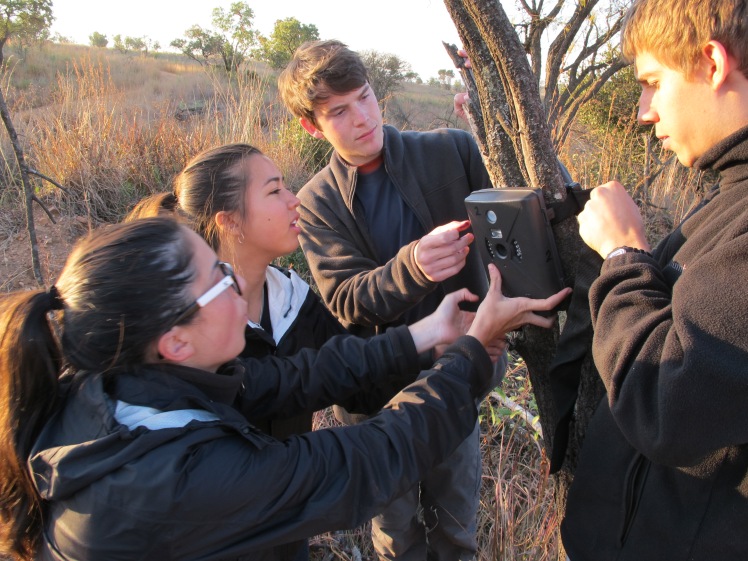
I have spent a month embracing technology as a valuable tool in the classroom (and as a valuable tool to get out of the classroom!). TweetDeck and Feedly reign in top spots on my bookmark bar. All my school documents are organized in GoogleDocs. My blog is starting to feel like a friendly space to share my thoughts. My PLN is growing and offering me infinite inspiration. Daily I consider the question, “how can I use technology, instead of it using me.” Most of the time, I am feeling satisfied that technology is enriching, rather than detracting, from my educational experience.
However, my desire to find symbiosis between technology-based learning and nature-based learning is still falling short.
I attended an EdCamp session on Technology and Nature, hoping to find some inspiration for using technology as a means of reinforcing students’ connections with the natural world. For the most part, I left with more questions and concerns, than answers. Of the ideas brainstormed in the session, technology’s role in nature-education seemed to be confined to using technology to collect evidence of outdoor learning (ex. using an ipad to photo-document answers to a nature scavenger hunt). As evidence of outdoor learning, I believe photos fall short of inspiring the level of observation and engagement encouraged by other forms of documentation. For example, if students were required to draw a leaf, rather than photograph it, they are likely to pick up the leaf, examine it from all angles, feel its texture, study its shape and perhaps even smell the leaf! One of best things about exploring the outdoor environment is tuning into all our senses for observation. Observing through a camera lens seems to cut students’ sensory experiences short.
I left the session worried that the growing drive to insert technology into nature-education was guided by a sense of obligation to 21st century learning, rather than a recognition of the opportunities afforded by technology to deepen our experiences in nature education.
That said, I am not dissuaded in continuing my quest to find symbiosis between tech-based and nature-based learning. As a rebuttal to my dissatisfaction with the solutions for integrating tech and nature discussed at EdCamp, I am inspired to brainstorm some of my own ideas. Here is a start to a list of ideas of ways to use technology in nature that look beyond using technology to capture evidence of experience, and instead use technology to enrich the actual process of nature education:
- Time-lapsed photography of specific locations. Students could track changes over different time periods. Looking for changes between photos would inspire a high level of detailed observation of the photos and opportunity to critically examine natural cycles.
- Motion-sensored photography. Offers opportunity for students to hypothesize about animal inhabitants of a site, and feel the excitement of capturing otherwise unseen events. Provides a very unobtrusive method of learning about a natural systems.
- Contributing to online citizen science projects. Offers opportunity for students to apply their observation of a natural system by contributing to a collective research project.
- Expand the potential for detailed barefoot mapping by using technology to draw, symbolize and layer maps. Add technology to this model: sierraclub.bc.ca/wp-content/uploads/2015/08/Barefoot-Mapping_8-12.pdf. Mapping projects in general offer large potential for symbiosis between tech and nature education.
- Audio and video journaling of a sit spot to record observation change over time (curious what a sit spot is? start here: http://www.seekerswild.com/sit-spot.html; then explore how it link to curriculum: http://wildernessawareness.org/articles/the-science-of-sit-spot)
As a side note, I did find inspiration in this EdCamp session about incorporating technology and experiential education with an amazing example from Claremont Secondary School’s Institute for Global Solution. Check this out! www.instituteforglobalsolutions.ca
Enjoyed this post Tessa. I agree – if we’re using technology in nature it should be able to add significantly to the experience rather than just document it. Reminded me of this: http://www.booooooom.com/2015/10/14/innovative-virtual-reality-experience-allows-you-to-rediscover-the-forest-as-an-animal/ – using tech to allow you to experience nature in a way we couldn’t otherwise. Looks like fun!
LikeLike
Wow! That does look like fun…and also a great example of how technology can be used to effectively help us engage in the natural world, instead of detract! Thanks for sharing.
LikeLike
Geoscopes!
http://www.amazon.com/MANLEYTO-Geoscope-Lightscope-30x/dp/B00700NOMY
LikeLike